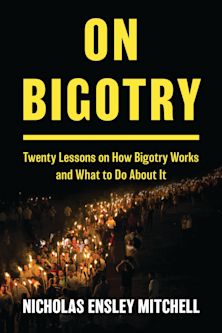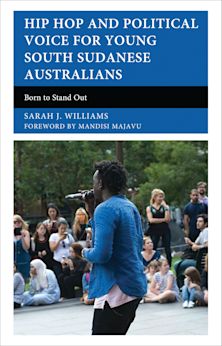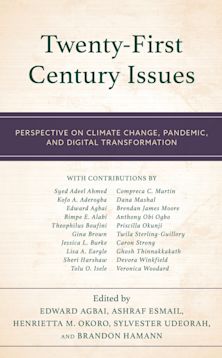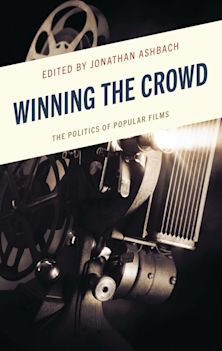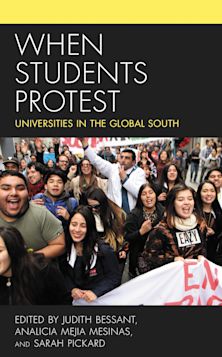- Home
- ACADEMIC
- Politics & International Relations
- Politics - Other
- Unconventional, Partisan, and Polarizing Rhetoric
Unconventional, Partisan, and Polarizing Rhetoric
How the 2016 Election Shaped the Way Candidates Strategize, Engage, and Communicate
Jeanine E. Kraybill (Anthology Editor) , Donna R. Hoffman (Contributor) , Christopher W. Larimer (Contributor) , Alison Howard (Contributor) , Raul Madrid Jr. (Contributor) , Mirya Holman (Contributor) , Abby Perkins (Contributor) , Carrie Skulley (Contributor) , Ivy A.M. Cargile (Contributor) , Stuart Wood (Contributor) , Nicole Mirkazemi (Contributor) , Randy Villegas (Contributor) , Chris Haynes (Contributor) , Jessica Sattler (Contributor) , Jeanine E. Kraybill (Contributor)
Unconventional, Partisan, and Polarizing Rhetoric
How the 2016 Election Shaped the Way Candidates Strategize, Engage, and Communicate
Jeanine E. Kraybill (Anthology Editor) , Donna R. Hoffman (Contributor) , Christopher W. Larimer (Contributor) , Alison Howard (Contributor) , Raul Madrid Jr. (Contributor) , Mirya Holman (Contributor) , Abby Perkins (Contributor) , Carrie Skulley (Contributor) , Ivy A.M. Cargile (Contributor) , Stuart Wood (Contributor) , Nicole Mirkazemi (Contributor) , Randy Villegas (Contributor) , Chris Haynes (Contributor) , Jessica Sattler (Contributor) , Jeanine E. Kraybill (Contributor)
You must sign in to add this item to your wishlist. Please sign in or create an account
Description
The rhetoric and political communication of the 2016 Presidential Election was arguably unconventional, partisan, and polarizing—becoming a defining characteristic of the tone and feel of the campaign. In this volume we examine how rhetoric and various political communication strategies influenced and shaped the contours of the election and ultimately its outcome. Witnessing the most diverse electorate in U.S. political history, we look at how voters were primed for an anti-establishment/outsider candidate and how various rhetorical and communication appeals were used to strategically engage different groups of voters and at times, leave out or even scapegoat others. We also analyze how rhetoric and political communication shaped the debate on key issues such as climate change, immigration, national security, gender, and representation. In an age where having a social media presence is an essential campaign tool, we examine how Twitter was used by candidates and its impact on the electorate and news coverage. Overall, we demonstrate that political rhetoric and communication is impactful, bearing electoral consequences and the potential for policy outcomes, giving the reader much to consider as we approach the next midterm and general election.
Table of Contents
Jeanine E. Kraybill
Chapter 2: Iowa 2016: The Start of an Unusual Nomination Contest
Donna R. Hoffman, Christopher W. Larimer, and Alison D. Howard
Chapter 3: The Tone of Debates: The Difference between Democrats and Republicans during the Primaries
Raul Madrid Jr.
Chapter 4: Sending a Message to Who? Emails as Campaign Communication from Presidential Candidates
Mirya Holman and Abby Perkins
Chapter 5: “You Should Smile More!” Gender and Press Coverage of Candidates During the 2016 Presidential Primary
Carrie Skulley
Chapter 6: Latina Sophistication: Policy Issues and Candidate Choice in the 2016 Presidential Election
Ivy A.M. Cargile
Chapter 7: Chinese Hoax vs. Climate Hope: An Analysis of Partisan Environmental Rhetoric in the 2016 Presidential Race
Stuart Wood
Chapter 8: Tweeting Religion: The New God Strategy of the 2016 Presidential Election
Jeanine E. Kraybill, Nicole Mirkazemi, and Randy Villegas
Chapter 9: The Twitter Effect: How Trump Used Social Media to Stamp His Brand and Shape the Media Narrative on Immigration
Chris Haynes and Jessica Sattler
Chapter 10: Learning from the Rhetoric and Political Communication of the 2016 Election, a Reflective Essay
Jeanine E. Kraybill
Product details
| Published | 14 Nov 2017 |
|---|---|
| Format | Ebook (Epub & Mobi) |
| Edition | 1st |
| Extent | 238 |
| ISBN | 9781498554145 |
| Imprint | Lexington Books |
| Illustrations | 14 BW Illustrations, 19 Tables |
| Series | Voting, Elections, and the Political Process |
| Publisher | Bloomsbury Publishing |
About the contributors
Reviews
-
The book’s team of authors examine the use of language in the 2016 U.S. presidential campaign as it applies to a wide range of contexts, including the debates, campaign speeches, campaign e-mail, social media, and press coverage. A diverse array of theories are used in the analysis, and the insights provided are useful for political communication researchers and anyone else interested in politics.
John H. Parmelee, University of North Florida, co-author of Politics and the Twitter Revolution
-
This is a highly informative volume for anyone interested in the charged rhetoric of the 2016 election. A high-powered roster of experts address gender, ethnicity, and new forms of media and communication. This book is an important read for understanding our new political environment.
Julia R. Azari, Marquette University












